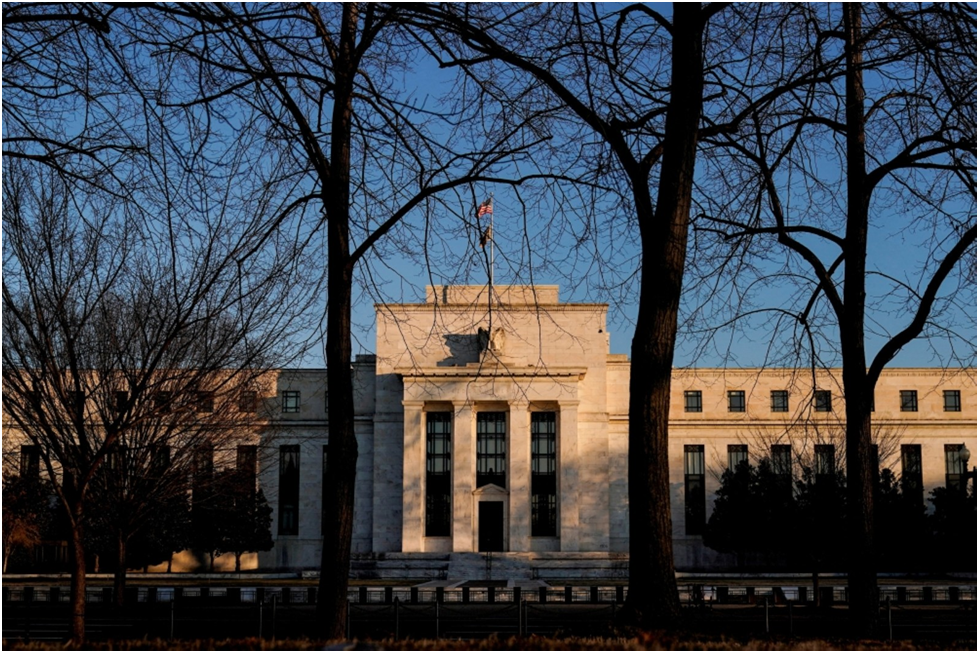
The US Fed is being sued by big banks and industry organisations over its annual stress testing

Major banks and business organizations filed a lawsuit against the Federal Reserve on Tuesday, claiming that the US central bank's yearly 'stress tests' of Wall Street institutions are unlawful. The legal action submitted to US district Court in Columbus, Ohio, argues that the Fed's method of evaluating how large banks would fare during hypothetical economic crises and setting capital requirements based on those results does not comply with appropriate administrative procedures. The plaintiffs include the bank Policy Institute, the US Chamber of Commerce, and the American Bankers Association. This lawsuit is another instance of the banking sector becoming more assertive in contesting the authority of their regulators in court, especially after recent supreme court decisions that have introduced new limitations on administrative power. In June, the supreme court significantly restricted such authority by overturning a 1984 ruling that had previously allowed deference to government agencies in interpreting the laws they enforce. The so-called 'Chevron doctrine' required judges to defer to reasonable interpretations by federal agencies of US laws that were considered ambiguous. Although the 2010 Dodd-Frank Act, which was enacted in response to the global financial crisis, broadly mandates the Fed to evaluate banks' balance sheets, the capital adequacy assessments that the Fed conducts as part of its tests, along with the capital it requires banks to reserve, are not explicitly mandated by law. Specifically, the organizations are requesting the Fed to publicly disclose and allow feedback on the currently confidential models it employs to assess bank performance, as well as the details of the annual scenarios it devises to identify weaknesses. The groups stated that they do not intend to eliminate the stress testing program, which delivers an annual assessment of the largest firms in the nation, but contend that the process needs to be more transparent and responsive to public input. On monday, the Fed revealed its plans to implement similar changes before the 2025 evaluations, referring to recent legal developments, but the banking industry chose to continue with its lawsuit. A spokesperson for the Fed declined to provide any comments regarding the lawsuit on Tuesday. "The lack of transparency surrounding these tests diminishes their effectiveness in offering meaningful insights into the resilience of banks," stated Rob Nichols, president and CEO of the American Bankers Association. "We remain optimistic that the Fed will address long-standing concerns related to the stress tests, but this legal action preserves our right to seek judicial remedies if the Fed does not meet expectations." These tests, which banks have criticized for years as lacking transparency and being subjective, are a fundamental element of the US regulatory bank-capital framework. The Fed has consistently resisted demands to fully disclose the testing process due to worries that it might facilitate banks in passing the exams. The results of these tests dictate how much capital banks must reserve to fulfill their responsibilities and also influence the extent of dividend distributions and stock buybacks. The US Federal Reserve announced on monday that it is contemplating significant modifications to its yearly bank 'stress tests' in response to recent legal developments, including potentially allowing banks to comment on the models it applies, representing a considerable win for Wall Street institutions. The Fed suggested that it might also permit banks to provide feedback on the hypothetical scenarios used during the annual assessments of bank health and that it may average results over two years to lessen the yearly fluctuations in the capital that banks must set aside to cover potential losses. The Fed initiated bank 'stress tests' after the financial crisis from 2007 to 2009 to evaluate whether large lenders could withstand an economic shock. These tests are central to the US capital regulatory framework, determining the amount of cash banks need to reserve to absorb losses and how much they can return to their shareholders.
Major banks and business organizations filed a lawsuit against the Federal Reserve on Tuesday, claiming that the US central bank's yearly 'stress tests' of Wall Street institutions are unlawful. The legal action submitted to US district Court in Columbus, Ohio, argues that the Fed's method of evaluating how large banks would fare during hypothetical economic crises and setting capital requirements based on those results does not comply with appropriate administrative procedures. The plaintiffs include the bank Policy Institute, the US Chamber of Commerce, and the American Bankers Association. This lawsuit is another instance of the banking sector becoming more assertive in contesting the authority of their regulators in court, especially after recent supreme court decisions that have introduced new limitations on administrative power. In June, the supreme court significantly restricted such authority by overturning a 1984 ruling that had previously allowed deference to government agencies in interpreting the laws they enforce. The so-called 'Chevron doctrine' required judges to defer to reasonable interpretations by federal agencies of US laws that were considered ambiguous. Although the 2010 Dodd-Frank Act, which was enacted in response to the global financial crisis, broadly mandates the Fed to evaluate banks' balance sheets, the capital adequacy assessments that the Fed conducts as part of its tests, along with the capital it requires banks to reserve, are not explicitly mandated by law. Specifically, the organizations are requesting the Fed to publicly disclose and allow feedback on the currently confidential models it employs to assess bank performance, as well as the details of the annual scenarios it devises to identify weaknesses. The groups stated that they do not intend to eliminate the stress testing program, which delivers an annual assessment of the largest firms in the nation, but contend that the process needs to be more transparent and responsive to public input. On monday, the Fed revealed its plans to implement similar changes before the 2025 evaluations, referring to recent legal developments, but the banking industry chose to continue with its lawsuit. A spokesperson for the Fed declined to provide any comments regarding the lawsuit on Tuesday. "The lack of transparency surrounding these tests diminishes their effectiveness in offering meaningful insights into the resilience of banks," stated Rob Nichols, president and CEO of the American Bankers Association. "We remain optimistic that the Fed will address long-standing concerns related to the stress tests, but this legal action preserves our right to seek judicial remedies if the Fed does not meet expectations." These tests, which banks have criticized for years as lacking transparency and being subjective, are a fundamental element of the US regulatory bank-capital framework. The Fed has consistently resisted demands to fully disclose the testing process due to worries that it might facilitate banks in passing the exams. The results of these tests dictate how much capital banks must reserve to fulfill their responsibilities and also influence the extent of dividend distributions and stock buybacks. The US Federal Reserve announced on monday that it is contemplating significant modifications to its yearly bank 'stress tests' in response to recent legal developments, including potentially allowing banks to comment on the models it applies, representing a considerable win for Wall Street institutions. The Fed suggested that it might also permit banks to provide feedback on the hypothetical scenarios used during the annual assessments of bank health and that it may average results over two years to lessen the yearly fluctuations in the capital that banks must set aside to cover potential losses. The Fed initiated bank 'stress tests' after the financial crisis from 2007 to 2009 to evaluate whether large lenders could withstand an economic shock. These tests are central to the US capital regulatory framework, determining the amount of cash banks need to reserve to absorb losses and how much they can return to their shareholders.

